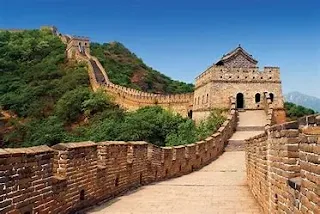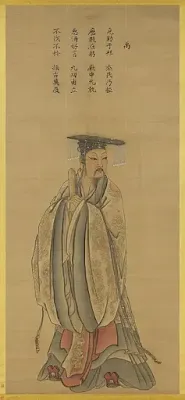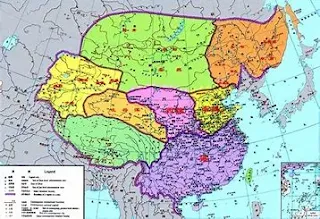China's Rise: A Brief History of Its Economic and Political Transformation
Table of Contents
China, one of the world's oldest civilizations, has a rich and complex history that spans thousands of years. From the earliest days of the Xia dynasty to the present day, China has undergone dramatic changes, seen powerful empires rise and fall, and played a vital role in shaping the course of world history. In this article, we will take a journey through the history of China, exploring the major events, dynasties, and figures that have shaped this remarkable country.

Pre-Imperial China (c. 2100 BC - 221 BC)
The earliest known civilization in China was the Xia dynasty, which is believed to have existed from around 2100 BC to 1600 BC. However, little is known about this period of Chinese history, and the existence of the Xia dynasty is debated by scholars.
The Shang dynasty followed the Xia, and it is the first dynasty for which there is solid archaeological and historical evidence. The Shang ruled from around 1600 BC to 1046 BC and were known for their bronze metallurgy, ancestor worship, and divination practices.

The Zhou dynasty followed the Shang and was the longest-lasting dynasty in Chinese history, lasting from 1046 BC to 221 BC. During the Zhou period, the concept of the Mandate of Heaven emerged, which held that the ruler of China had the divine right to rule as long as he governed justly and efficiently. This idea would shape Chinese politics and philosophy for centuries to come.
Imperial China (221 BC - 1912 AD)
The Qin Dynasty (221 BC - 206 BC) was the first dynasty to unify China under a centralized government. The Qin ruler, Qin Shi Huang, was a ruthless leader who ordered the construction of the Great Wall of China and the famous Terracotta Army. However, the Qin Dynasty was short-lived, and it fell apart just a few years after Qin Shi Huang's death.
The Han dynasty (206 BC - 220 AD) followed the Qin and is often considered the golden age of Chinese civilization. Under the Han, China experienced a period of economic growth, cultural flourishing, and territorial expansion. The Han dynasty was also marked by the invention of paper, the creation of the Silk Road, and the development of Confucianism as a guiding philosophy.
The period of the Sixteen Kingdoms (304 AD - 439 AD) was a time of political disunity and conflict in China, as various states vied for power in the wake of the collapse of the Han dynasty. The Northern Wei dynasty emerged as the dominant power in northern China during this period, and it is notable for its patronage of Buddhism and the creation of the Longmen Grottoes.
The Sui dynasty (581 AD - 618 AD) reunified China after centuries of division and chaos. The Sui ruler, Emperor Yang, was a controversial figure who oversaw the construction of the Grand Canal and launched disastrous military campaigns in Korea and Vietnam. The Sui dynasty was short-lived, and it was replaced by the Tang dynasty in 618 AD.
The Tang dynasty (618 AD - 907 AD) is often considered the peak of Chinese civilization, marked by a golden age of art, literature, and poetry. The Tang dynasty also saw the expansion of Chinese influence throughout Asia, with tributary states paying tribute to the Tang court. However, the Tang dynasty was plagued by internal rebellions, and it eventually collapsed in 907 AD.
The Song dynasty (960 AD - 1279 AD) emerged after a period of political turmoil and fragmentation in China. The Song dynasty is notable for its technological innovations, including the invention of gunpowder, movable type printing, and the compass. The Song dynasty was also marked by the rise of Neo-Confucian thought, which emphasized the importance of morality and personal cultivation in addition to traditional Confucianism.

The Mongol Empire, under the leadership of Genghis Khan, invaded and conquered China in the early 13th century. The Mongols established the Yuan dynasty (1271 AD - 1368 AD), which saw the integration of China into a larger global system of trade and exchange. The Yuan dynasty is notable for its patronage of the arts, particularly the creation of the famous Blue and White porcelain.
The Ming dynasty (1368 AD - 1644 AD)
followed the Yuan and is known for its restoration of traditional Chinese
culture and Confucian values. The Ming dynasty saw the construction of
many famous landmarks, such as the Forbidden City and the Great Wall of
China. The Ming dynasty also saw the voyages of Admiral Zheng He, who led
expeditions to Southeast Asia, India, and East Africa.
The Qing dynasty (1644 AD - 1912 AD)
was the last imperial dynasty in China and was ruled by the Manchu people
from the north. The Qing dynasty is notable for its expansion of Chinese
territory, particularly in Central Asia and Mongolia. However, the Qing
dynasty was also marked by conflicts with foreign powers, such as the
Opium Wars with Great Britain.
Modern China (1912 AD - present)
In 1912, the Qing dynasty was overthrown, and the Republic of China was established under the leadership of Sun Yat-sen. However, the Republic of China was plagued by political instability and conflict, particularly between the Nationalist Party and the Communist Party.
In 1949, after a long and bloody civil war, the Communist Party, led by Mao Zedong, emerged victorious and established the People's Republic of China. Under Mao's leadership, China underwent significant social and economic changes, including the collectivization of agriculture, the Cultural Revolution, and the establishment of a centrally planned economy.
After Mao's death in 1976, China underwent significant economic reforms under the leadership of Deng Xiaoping, who opened up the country to foreign investment and market-oriented policies. Since then, China has experienced rapid economic growth and has become a major player on the global stage.
In recent years, China has faced challenges such as political tensions with neighboring countries, environmental issues, and human rights concerns. However, China continues to be an influential and important country, with a rich and complex history that has shaped its present and will continue to shape its future.
Conclusion
The history of China is long and complex, spanning thousands of years and encompassing numerous dynasties, rulers, and cultural movements. From the earliest days of the Xia dynasty to the present day, China has undergone significant changes and played a vital role in shaping the course of world history.
China's history is marked by numerous achievements and innovations, including the invention of paper, the creation of the Silk Road, and the development of Confucianism and other philosophical and religious traditions. However, China has also faced challenges and struggles, such as political instability, conflict with foreign powers, and social and economic upheavals.
Today, China is a major player on the global stage, with a rapidly growing economy and a significant presence in international politics and trade. Despite its challenges and controversies, China's rich and complex history continues to shape its present and will undoubtedly continue to shape its future.
Wikipedia Link for Chinese Dynasties List
Come back for more interesting facts about history on
101 history facts. 🏆🥇🏆🥇🏆🥇
great blog👍👍great info✨✨
ReplyDelete